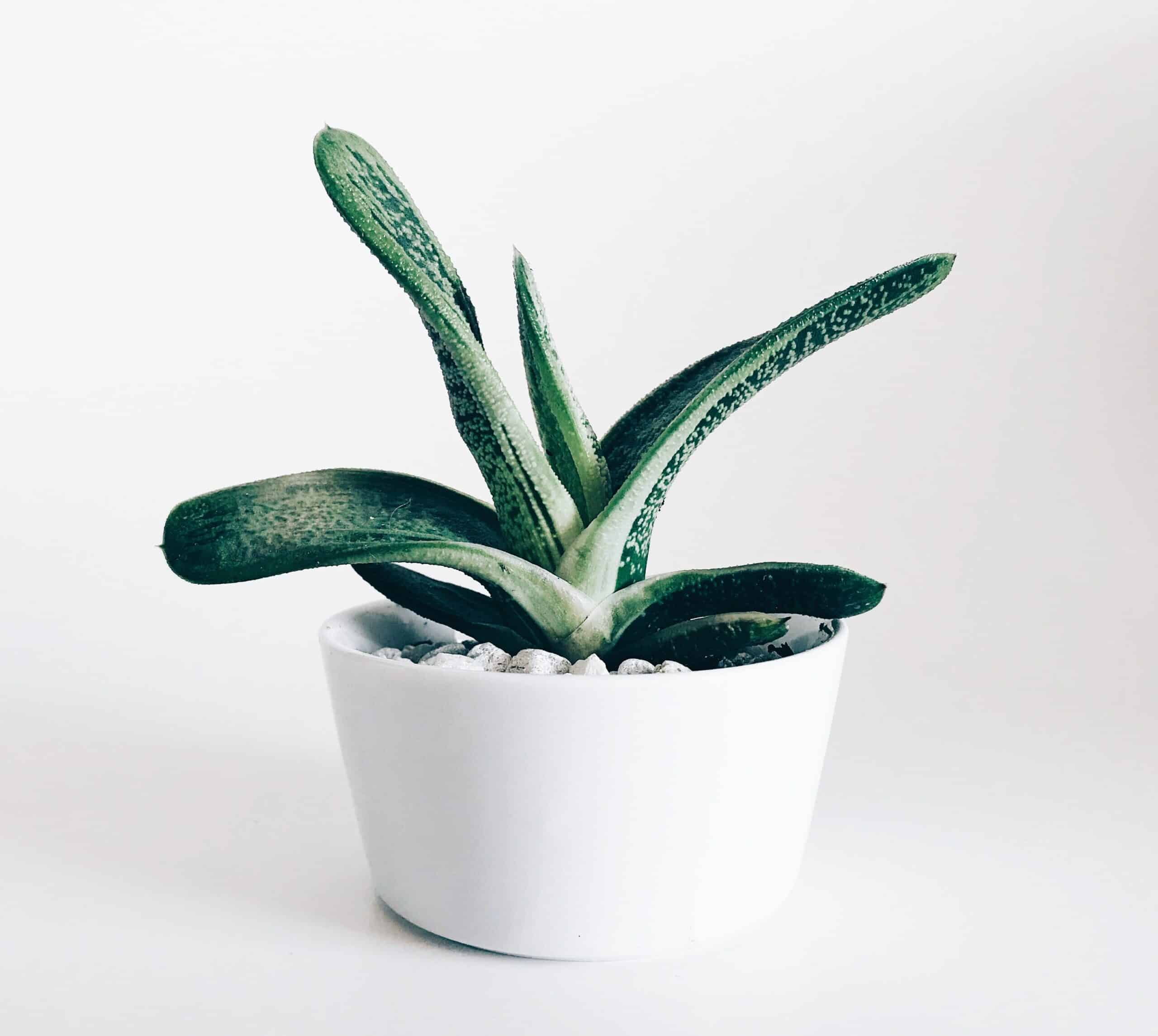Living stones are a unique and captivating sight to behold. Like a precious gem nestled in a bed of sand, these succulents are sure to bring life and vibrancy to any garden or home. Growing and caring for living stones can seem like an intimidating task, but with the right knowledge and commitment, anyone can become an expert!
The journey of growing these exquisite plants begins with understanding the basics of their needs and how to provide them with the best care. With just a few simple steps, you will be able to watch your living stones thrive in their new environment. Nurturing something as special as this is an experience like no other and one that you will never forget!
Are you ready to embark on a journey into the wonderful world of living stones? Read on for more information about how to grow and care for these stunning succulents!
What Are Living Stones?
With more than 10,000 species of succulents in the world, living stones are one of the more unique and fascinating. They are a type of succulent plant native to South Africa that resemble small pebbles scattered across the ground. As their name suggests, these plants have flat leaves that look very much like rocks or stones. A remarkable statistic is that some types of living stone can remain dormant for up to five years without any water!
If you’re looking to add some interesting foliage to your garden or home, then living stones may be a great choice. They require minimal care and are incredibly resilient; they don’t need direct sunlight, fertilizer or soil amendments. Instead, they thrive in well-draining pots with light watering only when the soil is completely dry. Make sure to use a pot with drainage holes for optimal growth and health.
Since living stones can survive in low-light conditions, they make excellent houseplants as well. When choosing a living stone plant for your home or garden, consider its size and shape as well as its sun requirements. Also keep in mind that some species require more frequent watering than others; look for plants labeled “drought-tolerant” for minimal maintenance. With just a little bit of knowledge and care, you can enjoy these remarkable plants for years to come!
Choosing Living Stone Plants
Living stone plants are an interesting and unique addition to any garden. They are native to the arid regions of South Africa and Namibia and can live up to 50 years. When choosing a living stone plant, there are several things to consider.
To start, it’s important to know that these plants come in two different sizes: small (less than 2 inches) or large (more than 2 inches). Also, living stones need bright light but no direct sun. The soil should be kept slightly dry, and the temperature should stay between 65-80 degrees Fahrenheit for optimal growth.
Here is a quick list of what you should consider when deciding on a living stone plant for your garden: • Size: small or large? • Light: bright, indirect sun? • Soil: dry? • Temperature: 65-80 degree Fahrenheit?
By taking these factors into consideration before planting, you’ll ensure that your living stones have the best chance at thriving in their new environment. With careful planning and proper care, these fascinating plants can bring beauty and life to your landscape for many years to come!
Planting Living Stones
Planting living stones is an absolute delight! It’s like taking the first steps of a great adventure with your own little green friends. Getting these succulent plants in the ground is simple and straightforward, but it takes some careful preparation to ensure they thrive.
The key is to use well-draining soil that allows excess water to evaporate quickly. You can even mix in some potting soil and gravel for extra drainage. Make sure to dig holes wide enough for the entire root system and not too deep – it should be just enough so that the base of the plant is level with the surrounding soil.
Once your holes are ready, you can start planting! Gently remove your living stones from their container and place them in the prepared holes. Firmly pack around the plant with soil, making sure there are no air pockets near the roots. Watering your plants deeply once or twice a week will help keep them healthy and happy.
Now that you know how to get started, it’s time to make sure your living stones have all they need to grow strong and vibrant by providing them with ideal location requirements.
Location Requirements For Living Stones
It’s almost like the location of a living stone is similar to the right home for a person. The right environment can have immense effects on the wellbeing, growth and happiness of the living stones. Just like with humans, giving them what they need, will result in them flourishing.
The ideal location requirements for a living stone are quite specific; they need to be in an area with plenty of sunlight and air circulation. To ensure this sunshine and air flow, it would be best to place your living stone in an unshaded spot such as near a window or in a bright room that won’t become overly hot during summer months.
Living stones also require warm temperatures—ideally between 65-75°F (18-24°C). If you find that your living stone isn’t doing so well even though you think it has the perfect amount of sunlight and air circulation, it may be worth checking if the temperature is too cold for them. With all these key elements taken care of, your living stone should be well on its way to thriving!
Soil Requirements For Living Stones
Just like human beings, living stones require certain conditions to grow and thrive. It is like a puzzle where all pieces need to fit together in order for a beautiful picture to emerge. The soil requirements are one of the most important pieces of this puzzle.
It is like baking a cake; if you get the ingredients wrong, it won’t turn out right. Similarly, if you don’t have the right soil for your living stones, they won’t grow as they should. You need an alkaline soil that is well-draining and has plenty of organic material mixed in. The soil should also be light and loose so that your living stones can easily spread their roots.
The best way to ensure optimal growth is to create a mixture of one part potting soil, one part coarse sand or perlite and one part peat moss or composted manure. This will give your plants the nutrients they need while providing proper drainage and air circulation for their delicate root systems. With this carefully crafted mixture, your living stones will be sure to thrive!
Water Requirements For Living Stones
Watering living stones is an important part of taking care of them. Without proper hydration, living stones can quickly become dehydrated, leading to wilting and even death. To ensure that your plants are healthy and thriving, let’s look at the water requirements for living stones.
When it comes to watering your living stones, you’ll want to give them a thorough soaking once every two weeks or so. Let the soil dry out completely between waterings. This will help prevent root rot and fungal diseases from occurring in your plants.
You may also want to mist your plants periodically with a spray bottle to help keep their leaves hydrated when there isn’t enough humidity in the air. Be careful not to over-water though, as this can cause root rot and other health problems for your plants:
• Too much water: ○ Can cause root rot ○ Leads to fungal diseases ○ Can stunt plant growth • Not enough water: ○ Causes wilting ○ Can lead to yellowing or browning leaves ○ Causes slow growth or death
Living stones are quite drought tolerant but still require a consistent watering schedule in order to stay healthy and happy. Taking care of them doesn’t need to be complicated – all they really need is some love and attention! With these tips on water requirements for living stones, you can keep your plants looking vibrant and beautiful for years to come. Now that we’ve covered how much water living stones need, let’s take a look at the light requirements for these unique succulents.
Light Requirements For Living Stones
As the sun sets, a garden of living stones sparkles in the golden light of dusk. Their unique and mysterious beauty is captivating, but they require specific care to thrive. One essential aspect of this care is light – living stones need proper lighting to flourish.
Living stones are native to desert regions and therefore enjoy full sun exposure. They should be placed in a location that receives at least six hours of direct sunlight each day, though eight hours is ideal for optimal growth. If planted under trees or other structures, the plants will likely not survive due to inadequate sunlight exposure.
If you live in an area where direct sunlight is limited, consider growing living stones indoors near a window with bright natural light or supplementing their lighting requirements with artificial grow lights. Additionally, rotating your plants can help ensure that all sides get adequate light exposure to promote even growth.
With these tips in mind, you’ll be well on your way to providing your living stone plants with the exact level of lighting they need for healthy growth and development – and as a result, you’ll have beautiful succulents that will add life and vibrancy to your home or garden! Now that we have discussed light requirements for living stones, let’s explore what temperature conditions they need to thrive.
Temperature Requirements For Living Stones
Living stones can be compared to a garden fairy, quietly and mysteriously appearing and disappearing in the desert heat. They are remarkable plants that require a specific temperature to survive and thrive – one that’s not too hot, and not too cold. To keep them happy and healthy, it’s important to understand the right climate for your living stones.
When it comes to temperature requirements for living stones, they prefer climates between 50-80°F (10-27°C). This is quite common in many areas of the world, like the central United States or in parts of Europe. However, it is best to keep your living stones away from direct sunlight when temperatures exceed 80°F (27°C) as this could cause their roots to dry up quickly. Additionally, if you live in an area with icy winters, you should consider bringing your living stones inside since prolonged exposure to temperatures below 40°F (4°C) can result in damage or even death.
When caring for your living stone plants, make sure that their environment is neither too hot nor too cold. As long as you provide them with plenty of light and water – as well as maintain consistent temperature levels – you will have a beautiful little garden fairy at home! With proper care and attention, these unique plants will bring joy into any space they inhabit.
By following these guidelines on temperature requirements for living stones, you can ensure that they stay healthy and vibrant year round. Next up is learning how to properly fertilize your little garden fairies so they can reach their full potential!
Fertilizing Living Stones
As if from a time-traveling fairytale, living stones are special succulents that look like smooth pebbles. Their ancient beauty has captivated gardeners for centuries, and it’s no wonder why! While growing living stones is not difficult, you do need to provide them with the right care. Fertilizing them is an important step for their health and growth.
Fertilizing living stones isn’t complicated, but it does require diligence. A slow-release fertilizer specifically designed for succulents should be applied twice a year: once in spring and once in summer. If needed, an additional application can be added in fall after the growing season ends. When fertilizing your living stones, make sure you spread the fertilizer evenly over the soil surface and water it well to encourage uptake of the nutrients by the plants.
It’s important not to overfertilize your living stones as this could cause damage or death. Too much fertilizer can burn the roots of your plants or lead to excessive growth of foliage at the expense of floral production. Stick with half-strength dosages and avoid feeding during periods of drought or cold temperatures; otherwise, you may end up burning your plants before they have a chance to thrive! With proper fertilization, you can enjoy these charming little succulents for years to come!
Pruning living stones helps keep them healthy and attractive by removing any dead leaves or flowers and encouraging new, fresh growth.
Pruning Living Stones
Pruning living stones is a great way to help them maintain their ideal shape and size. Although it’s not necessary to prune living stones, doing so will help keep your plant looking its best. The most important thing to remember when pruning living stones is that you should never remove more than ⅓ of the foliage at once. This will prevent the plant from being weakened or damaged.
When pruning, be sure to use sharp, clean scissors or clippers. Make sure that all of your cuts are even and neat in order to maintain the desired look for your plant. When cutting off the old foliage, make sure that you don’t accidentally cut off any new growth too.
In addition to helping your living stone look its best, regular pruning can also help encourage healthy new growth and flowering. Prune away any dead leaves or stems every few months in order to make way for fresh growth and blooms!
TIP: Use a magnifying glass when cutting away any old foliage from your living stone- this will help ensure that no new growth is accidentally snipped away!
How To Propagate Living Stones
Propagating living stones is like taking a snapshot of nature. It’s a chance to turn one plant into multiple and grow more of the beautiful succulents. The process isn’t difficult, but there are some specific steps you should follow to get the best results.
First, begin by using sharp scissors or garden clippers to cut off any low-growing branches from the base of the living stone. Then, remove any dead leaves or stems and discard them. Next, look for small clusters of leaves that are connected at their base – these are called offsets or pups – and carefully cut them away from the parent plant. Finally, place these offsets in a small pot filled with well-draining soil mix and water them lightly.
Once these pups have been planted, keep them in bright indirect light and water when the top inch of soil has dried out. Be sure not to overwater as this can lead to root rot and other problems for your new plants! With some patience and care, you’ll soon have multiple living stones where once there was only one.
Common Problems With Living Stones
Despite the fact that their low-maintenance care makes them an ideal choice for beginner gardeners, living stones can still present some common problems. In fact, research suggests that up to 60 percent of gardeners may experience at least one issue with living stones in their lifetime. To ensure your plants stay healthy and happy, here are four potential issues to watch out for:
Sunburn: Living stones plants are native to regions with bright sunlight and can be easily burned when exposed to too much sun. Make sure that your plant is receiving filtered light throughout the day and taking regular breaks from direct light.
Root rot: This is a common problem in succulents due to overwatering or poor drainage conditions. To prevent root rot, be sure to let the soil dry out between waterings and never allow it to become soggy or saturated.
Pest infestations: Aphids, mites, and other pests form colonies on living stones plants if left unchecked, so it’s important to inspect your plants regularly for signs of an infestation. If you do find any pests on your plant, use a mild insecticidal soap solution to get rid of them quickly.
Fungal diseases: Fungal diseases like powdery mildew can affect living stones if they’re left in humid environments for too long. Make sure that you provide adequate air circulation around the plant and avoid areas with high humidity levels as much as possible.
By staying aware of these potential issues, you’ll be able to keep your living stones healthy and thriving without any problems! As a last step towards keeping these plants safe from harm, pest control is key – but more on that later…
Pest Control For Living Stones
When it comes to pest control for living stones, it’s important to be proactive. Pests can cause significant damage to these fragile plants and often require immediate action. As such, taking preventive measures is crucial in ensuring your living stone plants stay healthy and vibrant.
First and foremost, you should inspect your plants regularly for signs of pests. This may reveal the root cause of any potential problems before they become too severe. You should also keep an eye out for newly introduced plants that may carry pests, as these could introduce them into your existing collection.
If you do notice signs of infestation, there are several steps you can take to address it. For instance, you can remove the affected plant from its current environment and treat it with insecticides or other treatments designed specifically for pest control. Additionally, cleaning the soil surrounding the plant is essential in eliminating any remaining pests or eggs that may be present in the soil.
These preventive measures will help ensure your living stone plants remain healthy and free from pests. With a few simple steps, you’ll be on your way to harvesting beautiful living stones from your garden!
Harvesting Living Stones
Did you know that living stones are the smallest succulents in the world? These miniature plants have become increasingly popular among gardeners looking to add a unique touch to their outdoor spaces. Harvesting these little gems is an important part of the process, so let’s take a closer look at how it’s done.
Living stones are slow-growing and can live for decades, so harvesting should be done with care. When you’re ready to take some of your living stones home with you, gently grasp them with both hands and twist until they come loose from the soil. If the soil sticks to them, use a soft brush or cloth to lightly remove it without damaging the roots.
When harvesting, try not to take too many at once – this will help ensure that your remaining plants stay healthy and full of life. It’s also important to give them time to adjust after being harvested, so keep them out of direct sunlight for about two weeks before planting again or displaying as decoration.
How To Display Living Stones
We all know how hard it can be to keep plants alive. But with the right care, even the most unusual ones can thrive. Living stones are one of those unique plants that truly bring life to a room! Here’s how you can make the most of their beauty with a few simple steps.
To begin, let me wow you with this: not only do living stones have an interesting appearance, they also require minimal maintenance. What could be better? Now let’s look at the best ways to display them.
Firstly, there’s no need to rush out and buy expensive pottery – living stone pots look great in anything from terracotta to glass. Try using different shapes and sizes for a unique look. Secondly, it pays to think outside the box when it comes to placement. How about adding some more drama by placing them on a low-lying table or shelf? Or if you want something more subtle, use small stones as accents around larger pieces of furniture for an unexpected touch.
Here are five creative ideas for displaying living stones: • Place them on a bright window sill that gets plenty of indirect sunlight • Create an eye-catching centrepiece by combining multiple species in one large container • Hang them from the ceiling or walls for an unusual vertical garden • Use little stones as part of a succulent wreath or terrarium scene • Propagate new plants and give away as gifts – everyone loves getting plants!
Living stones are beautiful, easy-to-care-for plants that make any space feel inviting and full of life. With a few thoughtful touches you can create impactful displays that will bring joy each time you walk into the room!
Frequently Asked Questions
How Long Does It Take For Living Stones To Mature?
Living stones are succulents that have adapted to their environment, creating an interesting visual effect on rock formations and desert landscapes. These plants can take up to three years to reach full maturity, making them a long-term investment for anyone looking to add some life and color to their garden or outdoor space.
These plants are resilient and can survive in both hot and cold climates. They require very little maintenance, only needing regular misting of water and a few hours of direct sunlight each day. A single living stone plant can produce several small offsets, which can be transplanted into other areas for additional growth.
TIP: When planting living stones, it’s important to choose the right soil mixture. Use a combination of one part compost, one part peat moss, and two parts sand for best results. This will give your plants the best chance of growing strong roots for a healthy future!
Are Living Stones Pet-Friendly?
Living stones are a unique and exotic plant species, but many people wonder if they are pet-friendly. An interesting statistic to consider is that living stones are one of the few succulent plants that can tolerate some handling. However, it is important to keep in mind that their delicate leaves can be easily damaged.
When considering whether or not to have living stones around pets, it is important to remember that their leaves contain sap which can cause stomach upset if ingested by cats or dogs. Therefore, if you have pets you should ensure that the living stones are kept out of reach so that your furry friends do not get sick from ingesting them. If handled with care, these lovely plants can be an attractive addition to any home without posing a risk to pets.
Fortunately, there are several measures you can take when caring for living stones around animals. For example, keeping these plants away from curious cats and playful puppies will help prevent any potential accidents or ingestion of the plant’s sap. Additionally, trimming off dead leaves and branches will help reduce the risk of pets playing with them while also improving the overall health of the plants. By taking these simple steps, you can enjoy having beautiful living stones in your home without worrying about your beloved four-legged companions!
What Type Of Soil Should I Use For Living Stones?
Growing living stones requires a special type of soil, as it helps them to thrive and bring life to your home. It might seem like a complicated task, but it’s actually quite simple. With the right knowledge and preparation, you can easily provide the perfect environment for these beautiful plants.
So what type of soil should you use for living stones? Well, ideally it should be light and sandy with some added organic matter like peat moss or compost. This will help promote drainage while also providing them with nutrients they need to survive. Additionally, you’ll want to make sure that the pH level is between 6-7.5 so that they can absorb all the minerals they require from the soil.
To get started on growing living stones, find a potting mix at your local garden store or online retailer that meets all these requirements. Work the soil into the pot and plant your living stones according to their instructions; then give them plenty of sunlight, water, and fertilizer to keep them healthy and happy! With just a little bit of effort and attention, you’ll soon have a thriving colony of living stones in no time!
How Often Should I Water My Living Stones?
Living stones, with their unique and almost alien-like appearance, are a remarkable sight to behold. But if you want them to thrive and grow in your garden, you’ll need to know how to take care of them properly. One important factor in keeping these succulents happy is knowing how often to water them.
Watering living stones is not an exact science, but rather depends on the conditions where they are planted. Generally speaking, they should be watered when the soil begins to dry out since these plants retain moisture very well and don’t need a lot of it. In temperate climates with cooler winters, water once or twice a month; in hotter climates or during summer months when temperatures rise, water more frequently. Make sure the soil has completely dried out before you water again.
If you’re still unsure as to whether your living stones need watering or not, stick your finger into the soil up to the second knuckle – if it feels moist then there’s no need to water them yet. On the other hand, if the soil feels dry then it’s time for another drink! It can also help if you use a potting mix specifically designed for succulents and cacti as this will help retain moisture better than regular potting soil would. Taking care of your living stones doesn’t have to be difficult – just remember that less is usually more when it comes to watering!
Is There A Way To Speed Up The Growth Of Living Stones?
Imagine the perfect living stone, nestled in its own little pocket of the world. It’s standing proud, a testament to its growth and strength. A true symbol of resilience and patience – it has taken many years for it to get to where it is today.
But what if there was a way to speed up this process? To make sure that your living stones reach their full potential with minimal effort on your part? Well, the good news is that there is!
With proper care and attention, you can ensure that your living stones grow quickly and healthily. Keeping them in a sunny spot with well-draining soil will provide them with the nutrients they need to thrive. Watering them regularly and fertilizing every few months will help promote healthy root growth. Additionally, pruning off any dead or dying leaves will encourage new leaves to sprout faster.
These simple steps won’t just give you beautiful living stones – they’ll also give you peace of mind knowing that you have done everything possible to support their growth and development. So don’t wait – start taking care of those living stones now, so that one day you can admire the fruits of your labour!
Conclusion
Living Stones are a unique and fascinating succulent that can add a surprising touch of color and texture to any garden. With the right care, they can be relatively easy to grow in pots or outdoors. To ensure success, it’s important to use well-draining soil and water sparingly. It’s also beneficial to remember that these plants take time to mature, so patience is key.
Living Stones are an excellent choice for pet owners looking for an attractive plant that won’t harm their beloved animals. Additionally, adding a bit of fertilizer or compost can help speed up growth if you are looking to get faster results.
Overall, Living Stones are an interesting addition to any garden or home, and with proper care can last for many years without much fuss. As the saying goes “patience is a virtue” – this allusion reminds us that living stones require careful attention but will reward us with long lasting beauty in return.







![Calculating How Much Stone Dust You Need 8 [Blog Post]Stone Dust © Oxfam Australia](https://green-life.blog/wp-content/uploads/2023/05/GdZVzgTqPhjq-150x150.jpg.webp)





















